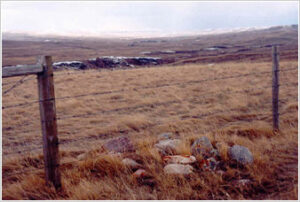When one thinks of the operations of a beef cattle ranch, one typically presumes that the cattle are the primary focus of the operation. When it comes to the McIntyre Ranch this is very close to the truth but since its inception, much attention has been given to the management of the grass. Without grass (and water) there would be no cattle. In order that grasses remain healthy, they must be rejuvenated. Long ago, this was accomplished with the herds of bison that roamed the region and the wildfires that burned at will. Grass management in the 21st century utilizes grazing.
Stocking rates (how many animals the land can tolerate) are determined by range condition. Range condition is determined by assessing species quantity and diversity. Healthy range condition will provide the highest, sustained production and therefore yield the most grass for the cattle to consume. Consumption is calculated as a percentage of body weight so by determining production and diversity, one is able to determine the carrying capacity for a given field. Standing carryover (unconsumed grass) is very important for maintaining healthy range condition.
Like humans, cattle are selective in what they eat. Some grasses are more palatable than others and some are more nutritious than others at different times of the year. Some grasses are also more susceptible to drought than others and some tolerate grazing pressure better than others. One manner in which to attract cattle to less desirable areas of a field (less palatable grasses and/or further from water) is to provide salt (may be fortified with vitamins and minerals). Studies indicate that frequency (how many times an individual plant is grazed) has an impact on forage quality and therefore species diversity. Lower density stocking rates tend to result in grazing selectivity and higher gains whereas higher density rates tend to result in lower gains but improved forage production. Studies also indicate that time of year grazing impacts quality and diversity. Management makes considerable effort to reach good balance between these factors.
The primary growing season in southern Alberta occurs during May, June and July. Stocking rates on the McIntyre range from approximately 14 acres (34.6 hectares) per animal unit (for fall/winter grazed fields) to 22 acres (54.4 hectares) per animal (for spring/summer grazed fields). This area represents the area that one cow (with a calf) needs to survive for a period of one year. At any given point in time, only 25% of the Ranch is grazed.



